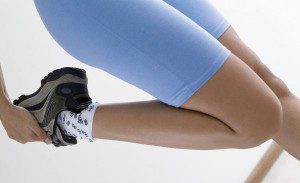By John C. Kagan, M.D. –
 Protect your knees
Protect your knees
Knee pain is common for many athletes and individuals who are aging across the U.S. It is responsible for nearly a third of doctor visits related to muscle and bone pain. Major reasons for knee pain include overuse injuries to the meniscus and knee ligament injuries to the ACL (anterior cruciate ligament), MCL (medial collateral ligament), and PCL (posterior cruciate ligament). Regardless of the activity of choice, whether its running, playing basketball, tennis, or other activities, avoiding knee pain must include choosing activity wisely and ensuring proper technique is adhered to.
The knee is the largest joint in the human body and is highly susceptible to trauma. Oftentimes, years of running causes what’s called “runner’s knee,” which is caused, in part, by the heavy stress placed on the front of the knee during the activity. Other vigorous activities that contribute to such stress on the knee joint include skiing, cycling and soccer. On the other hand, one of the best knee-friendly activities for those that have experienced knee pain or injury is swimming. Swimming is considered low-impact and like other low-impact activities, such as yoga, this protects joints from overuse.
Because knees can be so easily injured, stretching is a critical component to lifelong protection and health for knees regardless of activity level or athleticism. For those who have suffered reported knee overuse or ligament injuries, many knee conditioning treatment programs will incorporate a combination of stretching and flexibility to target muscle groups such as the quadriceps and hamstrings (front and back of thighs), abductors and adductors (outer and inner thighs), and the buttocks muscles.
Example knee conditioning program stretching exercises from the American Academy of Orthopedic Surgeons:
1. Heel Cord Stretch (this stretch should be felt
in the calf and heel muscles)
a. Stand facing a wall with the unaffected leg forward and slightly bent at the knee.
b. Place hands on the wall for support as you step the affected leg back and behind you, with the heel flat.
c. Keep the affected leg straight and both heels planted on the floor.
d. Hold the stretch for 30 seconds and then relax for 30 seconds. Repeat four times.
2. Standing Quadriceps Stretch (this stretch should be felt in the quadriceps muscle)
a. Stand near a chair or wall and place one hand on the chair or wall for support.
b. Bend your knee and bring the heel up toward your buttock.
c. Grasp your ankle with your hand and gently pull your heel closer to your body with the bent knee pointing down towards the ground.
d. Hold for 30 to 60 seconds. Repeat with the opposite leg for about three repetitions.
3. Supine Hamstring Stretch (this stretch should be felt in the hamstrings)
a. Lie on the floor
with both legs bent.
b. Lift one leg off the floor and bring the knee toward your chest with your heel pointing up to the ceiling and leg as straight as possible.
c. Clasp your hands behind your thigh below the knee.
d. Pull the leg gently in towards your head, until you feel the stretch.
e. Hold for 30 to 60 seconds. Repeat with the opposite side for about two or three repetitions.
With the aging population, knee pain risk increases due to a few other variables beyond athletic injury. As people get older, the cartilage that protects the bones will begin to break down in the knees. The risk of osteoarthritis, which is often considered the “wear and tear” arthritis, becomes greater. Factors such as obesity and muscle loss in the body can also leave people highly vulnerable to knee pain as they age.
Those experiencing knee pains must not ignore the pain. Feeling pain in the knee joint during activities, whether it’s just sitting, walking or exercising is a clear sign to visit with your orthopedist. Accurate diagnosis and proper treatment requires a very thorough understanding of the patient’s activity levels, pain patterns and medical history. Since knee pain can be a source of disability, restricting physical activities, taking steps to ensure prevention and seeking treatment at the first signs of pain will enable the best possible outcome.
Dr. John Kagan has more than 30 years of experience as an orthopedic surgeon treating patients in Southwest Florida. He specializes in treating patients with knee, shoulder and hip pain, as well as general orthopedics and hand surgery. For more information go to www.kaganortho.com.









